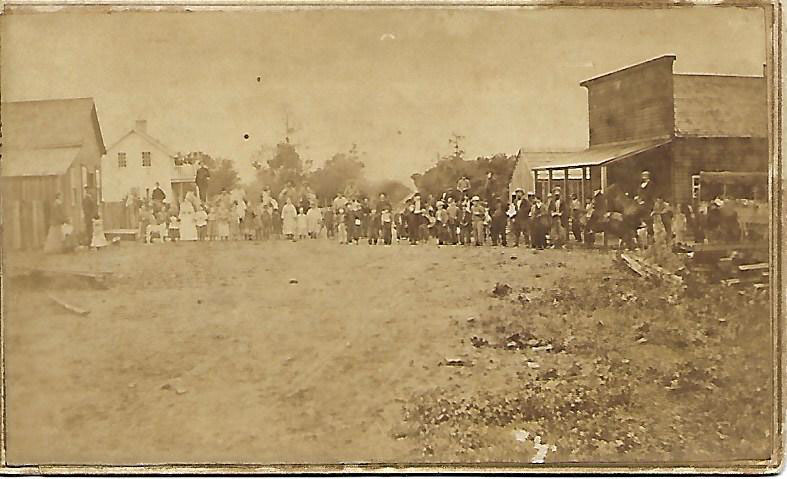Section #19 - Regional violence ends in Kansas as a “Free State” Constitution banning all black residents passes
Chapter 240: The Free State Wyandotte Constitution Is Approved In Kansas
October 4, 1859
The Final Constitution Passes By A 2:1 Margin

Captain John Brown prepares to attack Harpers Ferry, the people of the Kansas Territory are about to vote on the Wyandotte Constitution, the fourth and final document written to support their admission to the Union.
The document is crafted by the Free State forces and follows their failure to get their Leavenworth Constitution through the U.S. Senate in May 1858.
After that defeat, a proposal to try again is signed by Samuel Medary, the sixth Territorial Governor, in February 1859 and green-lighted by voters on March 29, 1859 by a margin of 5,306 to 1,425. The small town of Wyandotte, soon to be absorbed into Kansas City, is chosen as the venue, and on July 5, 1859, some 52 elected delegates – 17 Democrats and 35 Republicans – begin their work.
With the Pro-Slavery “English Bill” Constitution already defeated, the debates at the convention are not around slavery, rather on other potential “black rights” cited in the prior Leavenworth Constitution that many now consider “too radical.”
One such issue is whether or not “free blacks” will be allowed to reside in Kansas.
The original Topeka document excluded them, but the ban is dropped in Leavenworth, and again here at Wyandotte.
The Leavenworth Constitution not only welcomed blacks in Kansas, but also called for a popular referendum on allowing them to vote and on integrating them into the public schools. But both of these possibilities are dismissed by the more conservative delegates at Wyandotte.
Another issue relates to “women’s rights,” first debated at Leavenworth. The Wyandotte Constitution includes two important departures from the traditional law of “coverture,” one allowing women to own property, the other giving them equal rights to guardianship over their children.
The final Constitution also defines the exact western boundary line for Kansas and calls for a popular vote to select a permanent capital (which turns out to be Topeka).
The convention comes to a close after twenty-four days, on July 29, 1859. Delegates approve the final document 32-17, although true to its entire territorial history, the vote is split along political lines.
Delegate Votes On Wyandotte
| By Party | Aye | Nay |
| Republicans | 32 | 0 |
| Democrats | 0 | 17 |
| Total | 32 | 17 |
A statewide public poll on the constitution follows ten weeks later on October 4, 1859, and is passed by a 2:1 margin.
Popular Vote On Wyandotte
| # Kansans | |
| Approve | 10,421 |
| Reject | 5,530 |
After four bitter years of violence over the slavery issue, Kansas again applies to the U.S. Congress for admission as the 34th state in the Union.
1855-1859
Sidebar: The Four Kansas Constitutions And Its Final Admission As A State
Over roughly a four year period from December 15, 1855 to October 4, 1859, the opposing forces in Kansas will write four different constitutions.
Three are drafted by those intent on having Kansas declared a Free State: the Topeka, Leavenworth and Wyandotte documents. Their content varies significantly regarding the treatment of blacks and women, but all agree on banning slavery in the state.
The fourth, and by far the most historically impactful, is the Lecompton Constitution, drafted by Pro-Slavery forces who slip into Kansas from Missouri and conduct fraudulent votes to have it submitted to Congress. After it is repeatedly rejected by Northern members of the U.S. House, and then by the people of Kansas in two fair votes, it is finally discarded. But not before it has deepened the national divide between people in the North and South, further splintered the Democratic Party coalition, and cost James Buchanan control over his presidency.
History Of The Four Constitutions In Kansas
| Constitution Name | Authors | Public Voting | Date | Outcome In Congress |
| Topeka | Free-Staters | 1,731 – 46 | Dec 15, 1855 | Senate blocks 7/56 |
| Lecompton | Pro-Slavers | 6,134 – 569 163 – 10,266 | Dec 21, 1857 Jan 4, 1858 | House blocks |
| Leavenworth | Free-Staters | May 18, 1858 | Senate blocks | |
| Lecompton/English Bill | Pro-Slavers | 6,134 – 569 163 – 10,266 | Aug 2, 1859 | Efforts to pass end |
| Wyandotte | Free-Staters | 10,421 – 5,530 | Oct 4, 1859 | Approved 1/28/61 |
Ironically the request to admit Kansas as a Free State under the Wyandotte document arrives in Congress in February 1860, just as the Union itself is breaking apart.
In April 1860, the Republican controlled House favors admission by a 134-73 vote, only to have final passage stalled again in the Senate, where the Democrats still enjoy an eleven seat majority.
This stalemate continues until the November 1860 election of Abraham Lincoln prompts eleven Southern states to secede. The first five of them – South Carolina, Mississippi, Florida, Alabama and Georgia – are already gone by mid-January 1861, when the Kansas admission bill again comes to Congress.
The withdrawal of members from the Southern states radically alters the make-up of both the US House and Senate and removes the historical barriers for Kansas.
On January 21, 1861, the remaining senators vote 36-16 for admission. The House follows suit by a 119-42 margin on January 28. On January 29, 1861, fate has it that President James Buchanan, who has risked and lost his presidency opposing the entry of Kansas as a Free State, signs the final bill of admittance.